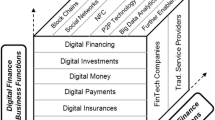Abstract
There is general consensus that the field of nanotechnology will be very important in the future. An open question is, however, which technological approaches or paradigms will be important in the field. The paper assumes that the carbon nanotube will be a key element of an emerging technological paradigm in nanotechnology. This study employs a bibliometric method — bibliographic coupling — to identify important nanotubes-related ‘leitbilder’ — a concept meaning ‘guiding images’ that provide a basis for different professions and disciplines to work in the same direction. Until recently, bibliographic coupling has been applied rarely for purposes of research evaluation, not to mention technology foresight. Our case study seems to suggest that bibliographic coupling is particularly suitable for anticipating technological breakthroughs. Bibliographic coupling analysis of recent nanotube-related patents focused our attention to recent patents owned by Nantero Inc. Nantero’s main focus is the development of NRAM — a high-density nonvolatile random access memory. The NRAM leitbild seems to be an important emerging leitbild. It connects technical opportunities and promising applications relating to the memories in devices such as cell phones, MP3 players, digital cameras, as well as applications in networking arena.
Similar content being viewed by others
References
Ansoff, I. (1984), Implanting Strategic Management, Prentice Hall International, New Jersey.
Brown W., Jin, S., Zhu, W. (2001), In-Situ Nano-Interconnected Circuit Devices and Method for Making the Same, US patent 6,297,063 full text.
Dosi, G. (1988), The nature of the innovative process, In: G Dosi et al. (Eds), Technical Change and Economic Theory, Pinter, London.
Dosi, G. (1982), Technical paradigms and technological trajectories, Research Policy, 11(3): 147–162.
Egghe, L., Rousseau, R. (2002), Co-citation, bibliographic coupling and a characterization of lattice citation networks, Scientometrics, 55: 349–361.
Glänzel, W. (2003), Bibliometrics as a Research Field, K.U. Leuven, F.E.T.E.W.: Leuven.
Glänzel, W., Czerwon, H. J. (1996), A new methodological approach to bibliographic coupling and its application to the national, regional and institutional level, Scientometrics, 37: 195–221.
Hicks, D. (1987), Limitations of co-citation analysis as a tool for science policy, Social Studies of Science, 17: 295–316.
Katz, J. S., Stewart, S., Gow, T. A. K., Martin, B. (2001), Science Foresight Project Final Report, Porton Down, Salisbury, Wiltshire: Defense Science and Technology Laboratory UK. www.sussex.ac.uk.Units/spru/foresight
Kessler, M. M. (1963), Bibliographic coupling between scientific papers, American Documentation, 14: 10–25.
Kuusi, O. (1999), Expertise in the Future Use of Generic Technologies, Government Institute for Economic Research (VATT), Doctoral thesis, Helsinki, B 59.
Kuusi, O., Meyer M. (2002), Technological generalizations and leitbilder — the anticipation of technological opportunities, Technological Forecasting & Social Change, 69: 625–639.
Luzzi, D., Smith B. (2005), Hybrid Materials and Methods for Producing the Same, US patent 6,863,857.
Marshakova, I. V. (1973), System of connections between documents based on references (as the Science Citation Index), Nauchno-Tekhnicheskaya Informatsiya, Seriya 2, (6): 3–8 (in Russian).
Marz, L., Dierkes, M. (1994), Leitbildprägung und Leitbildgestaltung, In: G. Bechmann, T. Petermann (Eds), Intedisziplinäre Technikforschung, Genese, Folgen, Diskurs. Campus, Frankfurt/M, New York.
Mau, A. et al. (2005), Patterned Carbon Nanotube Films, US patent 6,811,957 full text.
Merkerk, R., van Lente, H. (2005), Tracing emerging irreversibilities in emerging technology: the case of nanotubes, Report from the EU-US seminar: New Technology Foresight, Forecasting & Assessment Methods, Seville 13–14 May 2004.
Meyer, M. (2000), What is special about patent citations? Differences between patent and scientific citations, Scientometrics, 49: 93–123.
Meyer, M., Kuusi, O. (2004), Nanotechnology: Generalizations in an Interdisciplinary Field of Science and Technology, HYLE — International Journal for Philosophy of Chemistry, 10(2): 155–170.
Persson, O. (1994), The intellectual base and research fronts of JASIS 1986–1990, Journal of the American Society for Information Science, 45(1): 31–38.
Rueckes, T., Segal, B. (2004), Methods of Nanotube Films and Articles, US patent 6,835,591 full text.
Rueckes, T. et al. (2000), Carbon nanotube-based nonvolatile random access memory for molecular computing, Science, 289: 94–97.
Schmoch U. (1993), Tracing the knowledge transfer from science to technology as reflected in patent indicators, Scientometrics, 26: 193–211.
Schmoch, U. (1997), Indicators and the relations between science and technology, Scientometrics, 38: 103–116.
Sen, S. K., Gan, S. K. (1983), A mathematical extension of the idea of bibliographic coupling and its applications, Annals of Library Science and Documentation, 30: 78–82.
Sharabchiev, J. T. (1988), Comparative analysis of two methods of cluster analysis of bibliographic references, Nauchno-Tekhnicheskaya Informatsiya, Seriya 2, (4): 25–28 (in Russian).
Small, H. (1973), Co-citation in the scientific literature: A new measure of the relationship between two documents, Journal of the American Society for Information Science, 24: 265–269.
Small, H. (1978), Cited documents as context symbols, Social Studies of Science, 8: 327–240.
Small, H. (1982), Citation context analysis, Progress in Communication, Science, 3: 287–310.
Small, H. (1988), A general framework for general large-scale maps of science in two or three dimensions: The SciViz system, Scientometrics, 41: 125–133.
Vladutz, G., Cook, J. (1984), Bibliographic coupling and subject relatedness, In: Challenges to an Information Society, Proceedings of the 47th ASIS Annual Meeting (compiled by B. Flood, J. Witiak, T. H. Hogan), White Plains: Knowledge Industry Publications, 204–207.
von Wartburg, I., Teichert, T., Rost, K. (2005), Inventive progress measured by multi-stage patent citation analysis, Research Policy, 34(10): 1591–1607.
Author information
Authors and Affiliations
Corresponding author
Rights and permissions
About this article
Cite this article
Kuusi, O., Meyer, M. Anticipating technological breakthroughs: Using bibliographic coupling to explore the nanotubes paradigm. Scientometrics 70, 759–777 (2007). https://doi.org/10.1007/s11192-007-0311-5
Received:
Issue Date:
DOI: https://doi.org/10.1007/s11192-007-0311-5




